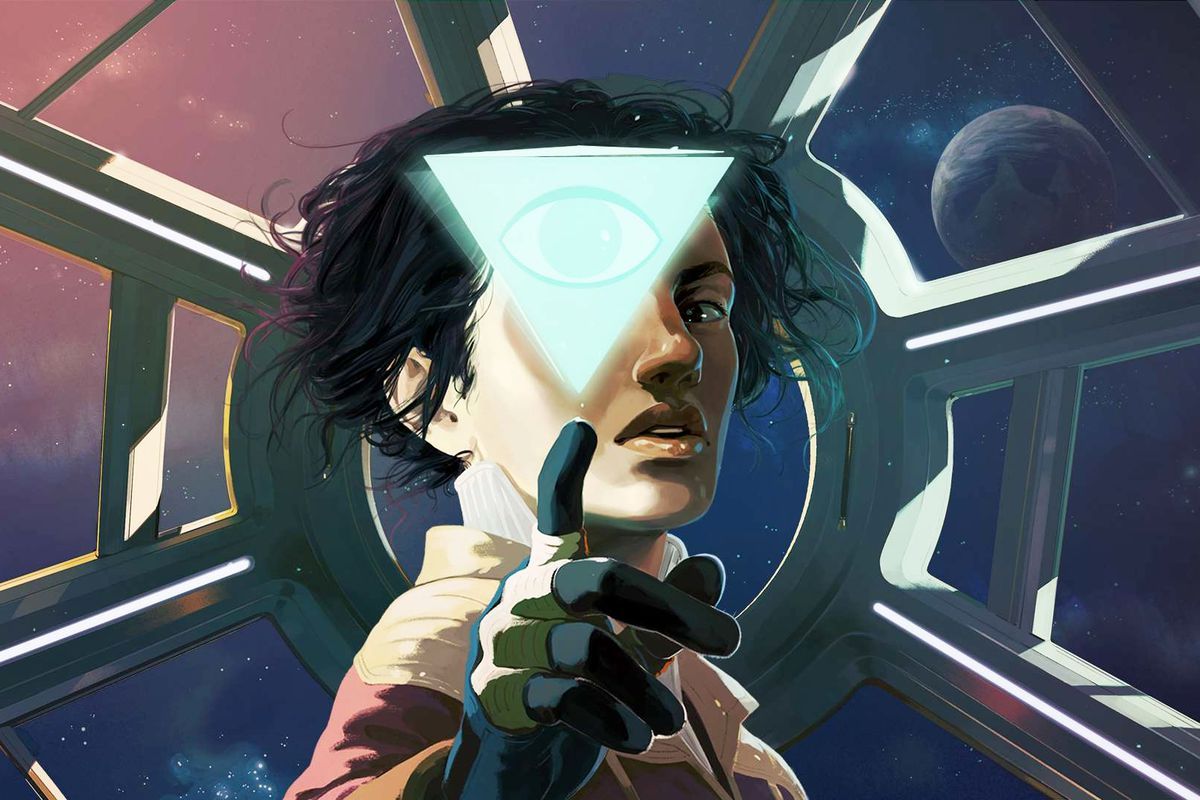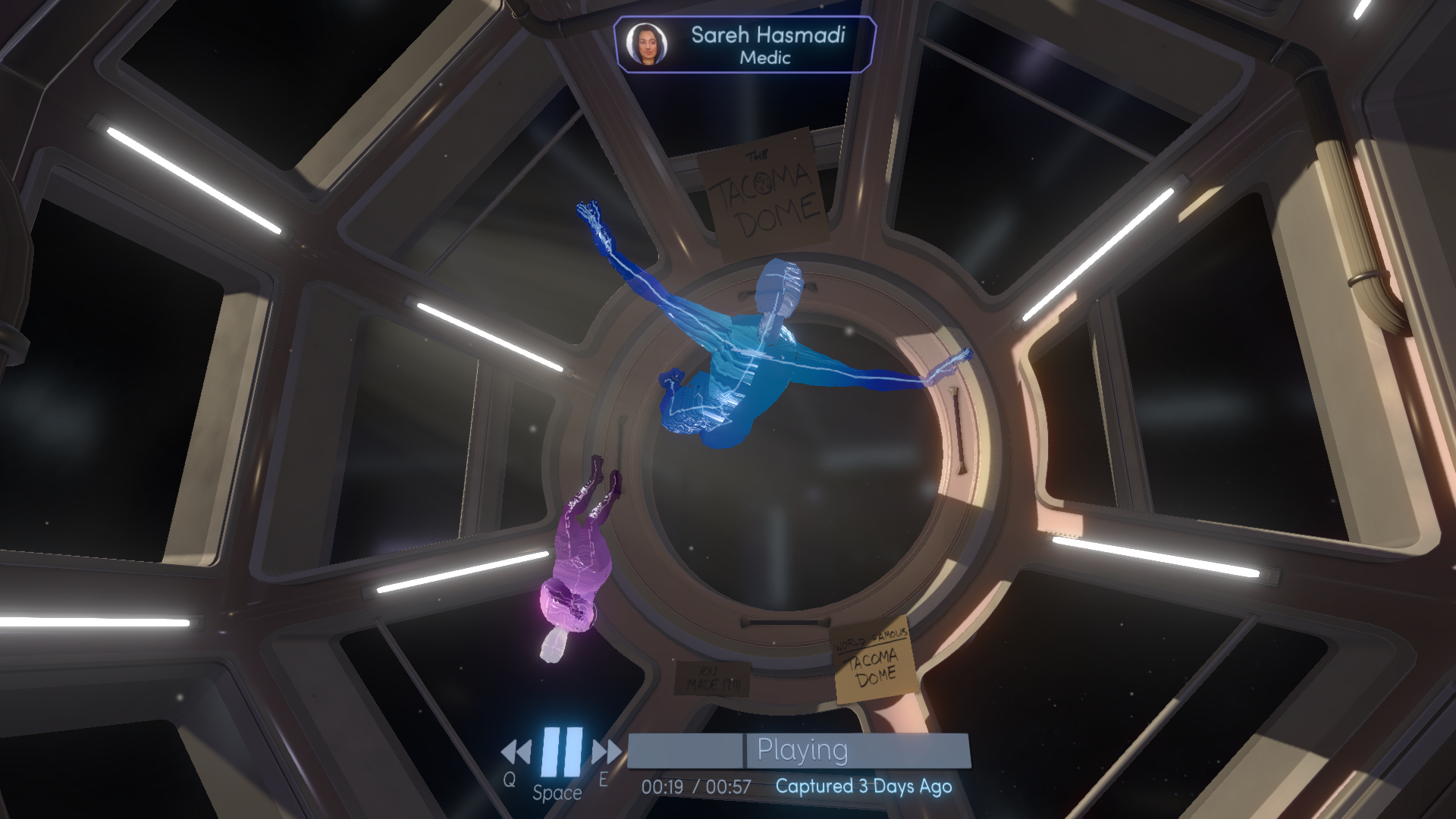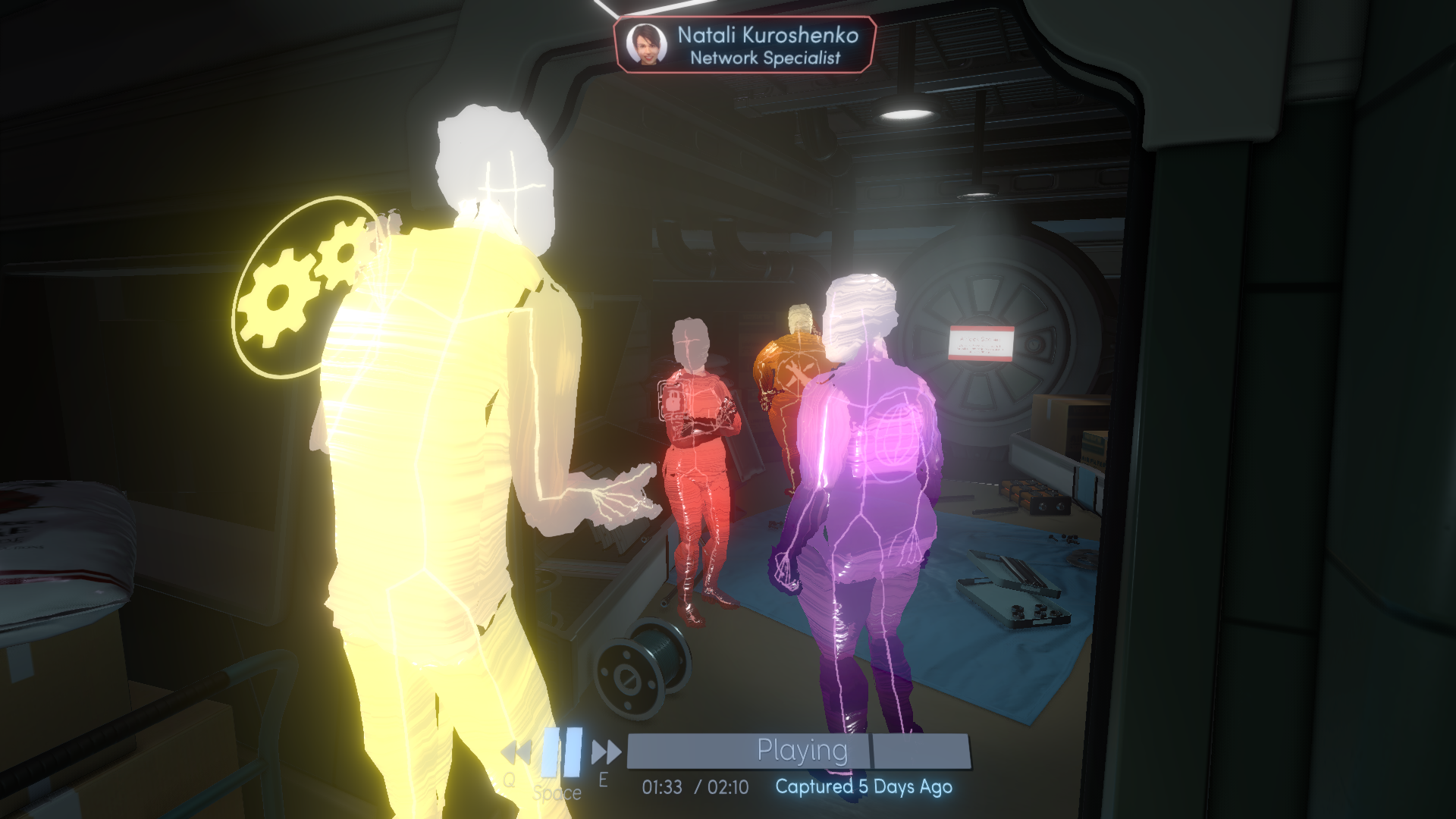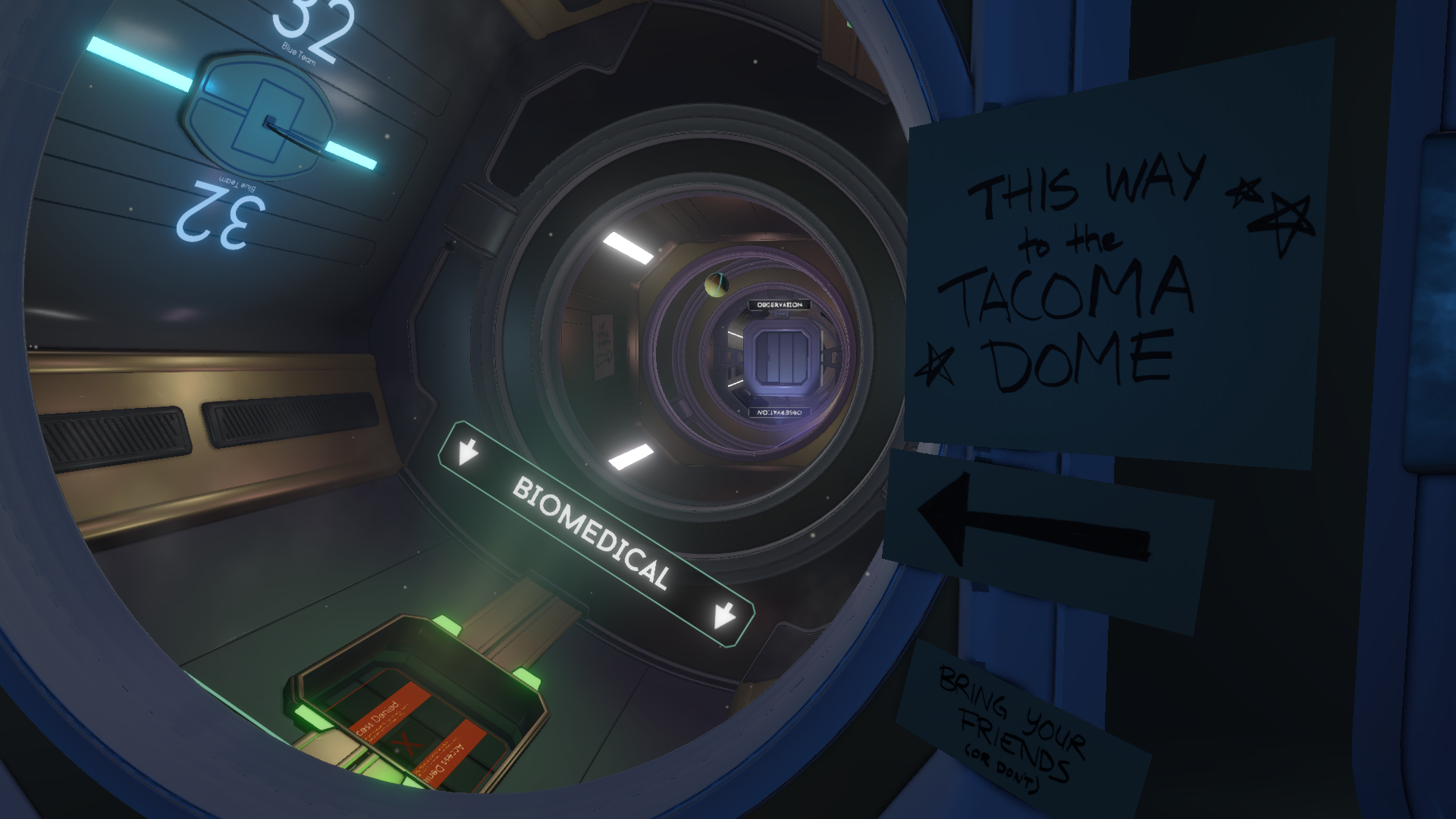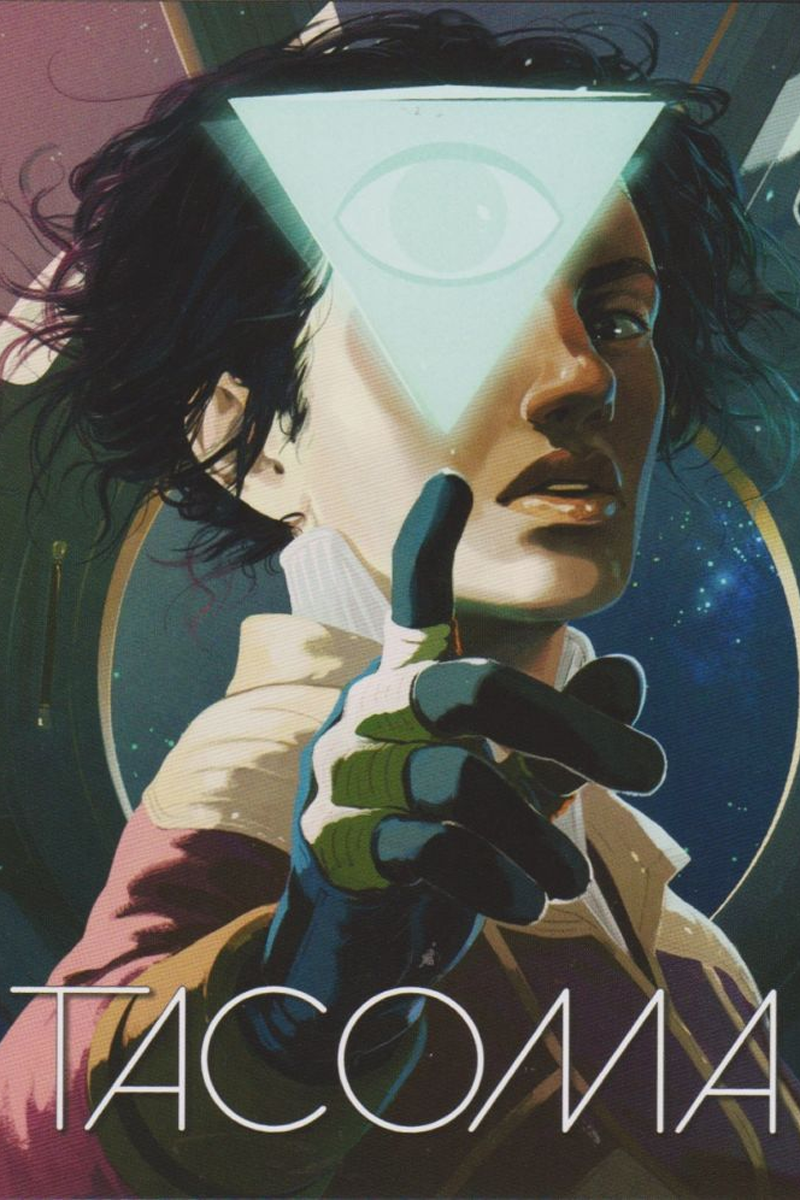Whether you love it or hate it, developer Fullbright's Gone Home was nothing short of an anomaly among the core gamer contingency. Simultaneously praised as the best game of last generation and derided as a walking simulator that can be beaten in under a minute, the genre-bending first-person experience title instantly gave the star developer Steve Gaynor and the fledgling development studio instant credibility. A year later, their next project – Tacoma – was revealed.
Much like Gone Home, Tacoma is a first-person experience with a predictably heavy narrative focus. However, instead of being propped up against a seemingly abandoned childhood home in the 90's, Tacoma takes its story to the new, err… the final frontier, so to speak. No, not Tacoma, Washington – the Lunar Transfer Station Tacoma orbiting Earth's L1 Lagrange Point.
Almost a hundred years following the setting of Gone Home, Tacoma begins with a contracted freelancer – Amy Ferrier – as she boards the space station on the behest of its owner, the Venturis Corporation. Her task is to retrieve all AI data (that conveniently logs voice records, movement, and personal emails of the crew) and extract the AI module itself, dubbed ODIN.
Let loose upon Tacoma, the game and narrative take shape over the span of the next three hours. Following a celebration of career automation and the renewal of contracts for all five members of the ship the oxygen tanks explode, both jamming the comm lines and creating a 50-hour window for either rescue or departure. The story focuses on the team's effort to survive those 50 hours.
[pullquote]"these scenes are given life through a remarkable gameplay mechanic that lets you review the AR copy of what happened"[/pullquote]
Unlike in other first-person experiences, including Gone Home and Dear Esther, these scenes are given life through a remarkable gameplay mechanic that lets you review the AR copy of what happened – filled with varied-color silhouettes to represent each character. If I'm losing you, think of the investigations in Rocksteady's Arkham series where you could pause, rewind, and investigate things.
As you may imagine, this AR playback format of storytelling added substantially to how I absorbed the story. Instead of hearing omniscient voices tell me about problems and troubles that caused the environmental havoc surrounding me, I could see it play out in real time. Even better, characters split off with conversations and encounters merge and separate. I may follow Natali and Bert as they try building an escape pod (and subjecting myself to PDA), whereas Andrew – the ship botanist – is tending to his plants, worrying about his family at home. Layering each occurrence with multiple characters (and private emails, available periodically through each scene) offered depth in each story vignette.
On the other hand, I could never entirely shake the feeling that we were being pushed a little too forcefully forward by the game's layout. With only a handful of scenes and a few hours of gameplay, Tacoma's "massive" space station feels in many ways more sterile than the quaint childhood home of Gone Home. Reasonable minds can differ about which main story is best, but Tacoma feels notably lacking in the environmental storytelling that made its predecessor a time-capsule equivalent of the 90's. While I got a quick glimpse of the 2080's, most people may feel blindsided by the game's ending because of how little discoverable context the game allows.
And although each of the six characters – including the sentient AI – has strong writing, skilled voice actors, and great animation backing it, the heavy focus on the main story detracts from the inter-personal relationships Fullbright is trying to build up throughout Tacoma. Each time I was hoping to get lost in something intimate and pointless, it always ended up steering back to the main plot in a way that made each scene feel calculated. While I appreciate directness is many different genres, first person-experiences and the characters in them are often made magical by detours and filler that bridge the momentous and the ordinary.
Outside of that, there are minor performance issues – even when playing on the PlayStation 4 Pro (albeit in 4K render mode). Bridging each area is a (roughly) one-minute load time (cleverly disguised as an elevator) that will stutter throughout. But, by and large, everything else in Tacoma runs excellently.
[pullquote]"...Tacoma is a sci-fi tale worth playing."[/pullquote]
While I do think the game could do with a bit more nuance, it isn't to say that the game is devoid of it altogether. The space station Tacoma is filled with items to explore and interact with, padding out the game's length if you are a person that reads the back of every chemistry book. However, where I could get lost in nostalgia in Gone Home's VHS's and DIY magazines, Tacoma's souvenirs offered more surface-level information.
Tacoma's three-hour span was a delightful experience, and I can see myself booting it up once or twice more to comb through the space station. And while this game cements Fullbright as a leading voice in the storytelling, first-person-experience genre, it showcases that both the genre itself and the sophomore developer still has some growing to do before we see masterpieces. For all those who can settle for less-than-perfect, Tacoma is a sci-fi tale worth playing.

